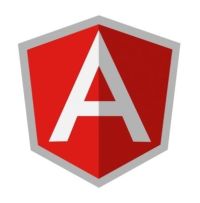Discover the strengths and weaknesses of Angular vs React in our in-depth guide. Choose the best for your project based on your unique needs.
More...
Choosing the right framework can make or break your project's success. Among the many popular options available, two frontend frameworks stand out: Angular and React.
We've seen clients struggle with the decision-making process. That's why we've put together this comprehensive guide to help you choose the best framework for your project. Throughout this guide, we will explore the differences between Angular and React, highlighting their unique features, performance, learning curve, component architecture, tooling, scalability, community support, and more.
By the end, you'll have a clear understanding of which framework is the best fit for your specific project requirements. So, let's take a look at Angular vs React and see which one is best for your project.
Introduction to Angular and React
As web development advances, new frameworks emerge to simplify the process and improve the user experience. Two of the most popular frameworks today are Angular and React.
Angular is a full-featured Javascript framework that is maintained by Google and follows a Model-View-Controller (MVC) architecture.
React, on the other hand, is a lightweight Javascript library developed by Facebook that uses a one-way data flow and works with a Virtual Document Object Model (VDOM).
Both Angular and React have significant followings and are widely used in the industry. In this guide, we will explore the differences between Angular and React, and help you to decide which one is most suitable for your project.
Key Features of Angular
Angular is a widely used framework for developing dynamic web applications. It boasts of various features that make it stand out among other front-end frameworks. Some of the key features of Angular are:
Feature | Description |
|---|---|
Data Binding | Angular supports two-way binding, which allows changes made to the model, to be automatically reflected in the user interface, and vice versa. |
Dependency Injection | Angular's dependency injection framework makes it easier for developers to write clean and testable code by separating component dependencies. |
Templates | Angular's templates allow developers to create dynamic user interfaces for web applications by combining HTML, CSS, and Angular syntax. |
Directives | Angular's directives are a powerful feature that allow developers to create reusable components and extend the behavior of HTML elements. |
Routing | Angular's routing module makes it easy to build single-page applications by allowing developers to define routes, and load content dynamically without the need for a page refresh. |
Testing | Angular has a built-in testing framework that supports various types of testing such as unit, integration, and end-to-end testing. |
These features make Angular a preferred choice among developers for building web applications that require high scalability and maintainability.
Key Features of React
React is a powerful JavaScript library for building user interfaces. It offers a unique set of features that make it a popular choice for web developers:
Feature | Description |
|---|---|
Virtual DOM | React's virtual DOM enables efficient updates and rendering of components. |
JSX syntax | React's JSX syntax makes it easy to write and maintain complex UI designs. |
Component-driven architecture | React's component-driven architecture allows for modularity, making it easier to maintain and reuse code. |
Unidirectional data flow | React's unidirectional data flow makes it easier to debug and modify code, as well as improve performance. |
One-way binding | React's one-way binding allows for more predictable behavior and easier testing. |
Overall, React's key features provide developers with the tools necessary to create dynamic, responsive, and maintainable user interfaces for web applications.
Performance Comparison: Angular vs React
When it comes to web development, performance is a critical factor that can make or break a project. In this section, we will compare the performance of Angular and React, examining their rendering speed, memory usage, and overall efficiency.

1. Rendering Speed
Angular and React use different approaches to rendering. Angular uses a two-way data binding system, where any changes made in the view are immediately reflected in the model. React, on the other hand, uses a unidirectional data flow, where data flows in one direction, from parent to child components.
Due to its fast and efficient virtual DOM system, React often outperforms Angular in terms of rendering speed. React’s virtual DOM system allows it to make minimal updates to the actual DOM, which results in faster rendering times.

2. Memory Usage
In terms of memory usage, Angular and React have different strategies. Angular maintains a single change detection system for the entire application, which can result in higher memory usage for large projects. React, on the other hand, uses a lightweight mechanism for managing changes and state, resulting in lower memory usage.

3. Overall Efficiency
When it comes to overall efficiency, both Angular and React offer great performance. Angular’s comprehensive framework includes many built-in features, which can aid in quick and efficient development. React, however, is lightweight, which makes it faster to download and easier to use.
In conclusion, both Angular and React are highly performant frameworks, but their approaches differ in terms of rendering speed, memory usage, and overall efficiency. Depending on your specific project requirements, you can choose the framework that best suits your needs.
Learning Curve: Angular vs React
Learning a new framework can be time-consuming and overwhelming. Therefore, it's essential to consider the learning curve associated with Angular and React before deciding which one to use for your project.

Angular has a steep learning curve due to its complex architecture and numerous features. It uses TypeScript, a superset of JavaScript, which requires developers to learn new syntax and concepts. Although Angular provides extensive documentation and tools that aid in the learning process, it still requires a significant amount of time and effort to master.

React, on the other hand, has a relatively easy learning curve, especially for developers who are already familiar with JavaScript. React's simplicity lies in its ability to focus on a specific task - building user interfaces. Developers can begin with small React components and gradually work their way up to more complex ones.
Additionally, React's community and ecosystem are incredibly supportive, providing numerous resources and helpful tools that make the learning process more accessible. The availability of online courses, tutorials, and forums also makes it easier to learn and master React.
In conclusion, both Angular and React have different learning curves, making it crucial to understand your project requirements before choosing a framework. If you're working on a large and complex project that requires a wide range of features, Angular might be the better fit, despite its steep learning curve. However, if you're looking for a simpler framework that focuses on building UI components, React might be the best option.
Component-Based Architecture: Angular vs React
Angular and React are both based on a component-based architecture, but they approach componentization in different ways. Angular uses a template-driven approach, where developers define the component's view and behavior in the same file. React, on the other hand, uses a JSX-based approach, where developers define the component's view using JSX and the behavior using JavaScript.
The advantage of Angular's template-driven approach is that it's easier to learn for developers who are familiar with HTML and CSS. It also provides a clear separation of concerns, as the code is organized by feature or functionality. The disadvantage of this approach is that it can become verbose, with a lot of boilerplate code required for larger applications.
The advantage of React's JSX-based approach is that it allows developers to write components using a syntax that's similar to HTML. This makes it easier to understand and maintain, as the code is more declarative. The disadvantage of this approach is that it requires developers to learn a new syntax and toolchain, which can be a steep learning curve for some.
Both Angular and React provide a way to reuse components across the application, which can improve performance and reduce the amount of code needed to maintain. In Angular, developers can create components using the @Component decorator, which allows them to define the component's template, style, and behavior. In React, developers can define components using classes or functions, which can be reused across the application.
Overall, both Angular and React provide a solid foundation for developing component-based applications. The choice between the two ultimately depends on the project's specific requirements, the team's expertise, and the project's scalability and maintenance needs.
Tooling and Ecosystem: Angular vs React
When it comes to choosing between Angular and React, one key aspect to consider is the tooling and ecosystem provided by each framework. Both Angular and React have vibrant and active communities, but the availability of libraries, frameworks, and development tools can make a significant difference in the productivity and efficiency of your development team. Let's take a closer look at the tooling and ecosystem of Angular and React.
Angular
Angular has a comprehensive toolset that provides developers with everything they need to build robust and scalable applications. Some of the key tools and frameworks offered by Angular include:
Tool/Framework | Description |
|---|---|
Angular CLI | A command-line interface that helps developers create and scaffold new Angular projects. |
Angular Material | A UI component library that follows Google's Material Design guidelines. |
NgRx | A state management library that enables data flow and actions within an Angular application. |
The Angular community is also known for its excellent documentation and resources, which can be found on the official Angular website, as well as various community-driven initiatives and forums.
React
React's tooling and ecosystem are equally impressive, with a plethora of libraries and frameworks that enable efficient development and deployment of React applications. Some of the key tools and frameworks offered by React include:
Tool/Framework | Description |
|---|---|
Create React App | A command-line interface that provides a quick and easy way to scaffold new React projects. |
React Native | A framework that enables the development of mobile applications using React principles. |
Redux | A state management library that enables data flow and actions within a React application. |
React's community is also highly active and supportive, with an abundance of resources and forums available to developers. The official React website is an excellent starting point, but there are also several community-driven initiatives that offer valuable insights and support.
Overall, both Angular and React provide robust tooling and ecosystems to support efficient and effective development. Make sure to assess your specific project requirements and choose the framework that best aligns with your team's goals and needs.
Scalability and Maintenance: Angular vs React
Scalability and maintenance are critical factors to consider when choosing between Angular and React. While both frameworks are scalable, there are differences in how they handle large-scale projects and long-term maintenance.
1. Scalability
Angular's architecture is built for large-scale enterprise applications and offers robust features for managing complex codebases. Its component-based architecture provides a clear structure for organizing code, making it easier to scale applications.
React, on the other hand, is lightweight, making it an ideal choice for smaller-scale applications. While React can be used for larger projects, its scalability is not as straightforward as Angular's due to its more flexible architecture.
However, React provides a distinct advantage in terms of performance. Its Virtual DOM allows for faster rendering, particularly when compared to Angular's two-way data binding.
2. Maintenance
Maintenance is essential for long-term project success, and both Angular and React offer tools and resources to simplify the process. Angular's focus on modularity and organization makes it easier to maintain large codebases. Its robust CLI provides features for generating and testing code, debugging, and building applications.
React's simplicity also makes it easy to maintain, with a smaller learning curve and a more flexible architecture. However, its lack of a set structure can make maintenance more challenging for larger projects.
In terms of community support, both frameworks have active communities with resources and tools available to simplify the maintenance process.
Framework | Scalability | Maintenance |
|---|---|---|
Angular | Robust features for managing complex codebases | Modularity and organization make it easier to maintain large codebases |
React | Lightweight and ideal for smaller-scale applications | Simple architecture makes it easy to maintain, but can be more challenging for larger projects |
- 1Angular's scalability is ideal for large-scale enterprise applications.
- 2React's flexibility allows for faster rendering, making it a good choice for smaller-scale applications.
- 3React's flexibility allows for faster rendering, making it a good choice for smaller-scale applications.
- 4Both frameworks offer tools and resources for maintenance, with Angular's modularity and organization providing an advantage for larger projects and React's simplicity making it a good choice for smaller projects.
When deciding between Angular and React, it's essential to consider scalability and maintenance requirements for your specific project.
Community and Industry Support: Angular vs React
Community and industry support plays a critical role in the success of any web development framework. Both Angular and React have established strong communities of developers who contribute to the growth and advancement of these frameworks.

Angular, originally developed by Google, has a large and active community that provides a wealth of resources such as tutorials, documentation, and forums. The community also contributes to a variety of third-party libraries and tools to enhance the capabilities of the framework.

React, on the other hand, enjoys the support of Facebook, which has developed the framework and actively maintains it. React has a vast community that generates a plethora of resources such as forums, meetups, and libraries to support the development of React-based applications.
Industry support is another crucial aspect to consider when choosing a web development framework. Angular has gained significant industry adoption, with numerous companies utilizing it for their web development needs. React is also widely used and has received industry support from big tech companies such as Facebook, Instagram, and Dropbox.
Framework | Community Support | Industry Support |
|---|---|---|
Angular | Large and active community, third-party library support | Gained significant industry adoption |
React | Vast community, Facebook's active maintenance and support | Industry support from Facebook, Instagram, and Dropbox |
Ultimately, the level of community and industry support offered by Angular and React is robust and continually growing. Regardless of what you choose, there will be a wealth of resources available to support your development efforts.
Final Thoughts
After thoroughly analyzing and comparing Angular and React, we have gained a better understanding of their features, performance, learning curve, component-based architecture, tooling and ecosystem, scalability, maintenance, community and industry support.
Depending on your specific project requirements, either Angular or React could be the best choice for you. If you are looking for a powerful and feature-rich framework that provides a comprehensive UI structure, Angular may be the best option. However, if you prefer a flexible and lightweight library that offers better performance and community support, React could be the way to go.
Ultimately, the decision between Angular vs React comes down to your personal preference, level of expertise, and project requirements. We hope this comprehensive guide has helped you make an informed decision and choose the best framework for your next project.
Other framework comparisons from Bluebird:
FAQ
Q: What is the difference between Angular and React?
Angular is a full-featured framework for building complex web applications, while React is a JavaScript library for building user interfaces. Angular provides a complete solution with features such as dependency injection, routing, and form validation, whereas React focuses primarily on the view layer and can be used with other libraries or frameworks.
Q: Which is more popular, Angular or React?
Both Angular and React have a significant user base and are widely used in the web development community. The popularity of each framework may vary depending on factors such as project requirements, developer preferences, and industry trends. It is recommended to evaluate your specific needs before making a decision.
Q: Is Angular or React better for performance?
The performance of Angular and React can depend on various factors such as the complexity of the application, the efficiency of the code, and the optimization techniques used. Both frameworks have ways to optimize performance, but it ultimately depends on the specific implementation and requirements of your project.
Q: Which framework has a steeper learning curve, Angular or React?
The learning curve for both Angular and React can vary depending on your prior experience and familiarity with JavaScript and web development concepts. Angular has a steeper learning curve due to its comprehensive nature and the need to understand concepts such as dependency injection and TypeScript. React, on the other hand, has a simpler learning curve as it focuses primarily on the view layer. However, it is still recommended to invest time in learning and understanding the fundamentals of each framework.
Q: Can I use Angular components in React and vice versa?
Angular and React have different component structures and syntax, making it challenging to directly use Angular components in React or vice versa. However, it is possible to create wrappers or adapters to integrate components from one framework into the other. It may require additional effort and customization to ensure compatibility.
Q: Which framework has a larger community and better industry support?
Both Angular and React have sizable communities and strong industry support. Angular, being a part of the Google ecosystem, has a large and active community with extensive documentation and resources available. React, on the other hand, is backed by Facebook and has a vibrant community with a wide range of libraries and tools. It is recommended to explore both communities and resources to determine which aligns better with your project and support needs.